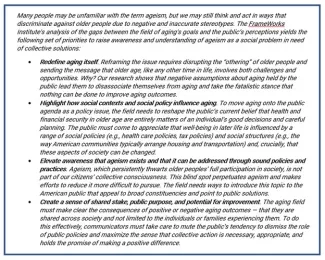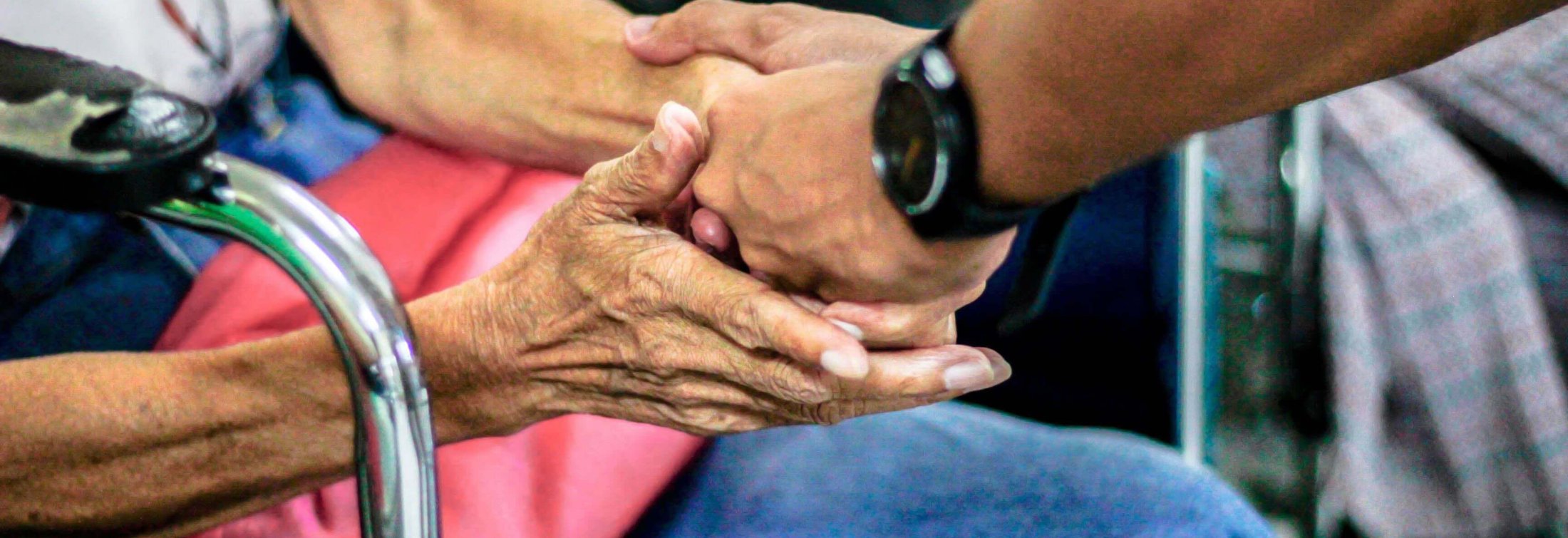Why It Matters
Photo by Jem Sahagun | Unsplash
Falling off a demographic cliff
The Silver Tsunami
A few years ago, images of natural disasters like these were commonly used to describe the demographic shift in the age of the US population. In recent years, however, these phrases seemed to largely disappear from wide use.
One reason may be the work of organizations like the FrameWorks Institute. A think tank that helps mission-driven organizations communicate about social issues, FrameWorks pointed out to advocates, health care systems, charitable foundations, and others working on aging issues that language like this was not helping their cause and may, in fact, be hurting it.
FrameWorks’ extensive research on public perceptions indicates that aging is misunderstood in America and that misperceptions create obstacles to productive practices and policies. “Much of the public sees aging as a period of decline” and not a time of often untapped wisdom and experience, explained Moira O’Neil, Senior Vice President of Research Interpretation at the FrameWorks Institute.
O’Neil is sympathetic to the challenge of raising awareness of big societal challenges like aging. “It's a balance of urgency and efficacy,” she acknowledged. To avoid despair or paralysis, informing the public about pressing needs must be paired with concrete examples of what society can do differently. As O’Neil noted, “There's nothing you can do about a tsunami but run, right?”
In the following interview, O’Neil explains how health care professionals and others can use evidence-based communications strategies to change the narrative about aging. More than just “spin,” she asserts that paying more thoughtful and strategic attention to how we talk about aging is essential to get the services, funding, support, policies, and systemic changes that would be most meaningful in the lives of older adults.
On the challenges of talking about ageism
When we first did our ethnographic research and qualitative interviews with members of the public, we would say, “Talk to us about ageism.” Often, we would get a deer-in-the headlights kind of a response. People didn’t know what we were talking about. Many people weren’t familiar with the term. [Editor's note: Ageism is discrimination against older people due to negative and inaccurate stereotypes.]
And ageism is so pervasive even among older people themselves. One of the things that was so fascinating is that people who you could identify as fitting in the demographic that we are thinking about would distance themselves from the idea of being an older person. Their thinking seemed to be, “I can’t experience ageism because I am not old.” [Editor’s note: The US Centers for Disease Control and Prevention defines older adults as those 65 and older. The WHO defines older adults as age ≥60.] We also find ways, as a society, to rationalize our own biases. You’ll hear things like, “We’re naturally drawn to people who are younger,” even though we can point to so many cultures and societies that are not as ageist as much of American society.
On the importance of changing public thinking about aging
FrameWorks has done a lot of research into mindset shifts or when we, as a society, have experienced fundamentally different ways of understanding an issue. People often focus on tobacco as an example of this. Another example is how FrameWorks Institute was central in helping people in the early childhood space communicate in different ways about early childhood development. As more people came to understand the science of early brain development and the impacts of adversity on that development, they better understood the systemic and policy shifts necessary to support children and families. We still have a long way to go, but a better understanding of early childhood development has contributed to some significant gains in the last 20 years.
Policy shifts need shifts in mindsets and shifts in mindsets need policy shifts. You can pass every law or change every policy in the world, but if you haven’t worked on public mindsets, those laws and policies are vulnerable to new administrations or other changes. If people don’t deeply understand why we need different policies, systems, structures, programs, or services, then we’re at risk for losing what we gained.

On initiatives raising awareness of ageism and expanding support for older adults
Advocates around the country have been doing so much work — including in places like San Francisco, New York City, and Boston — to bring deeper public awareness of ageism, how it operates, why it’s important to think about, and how to address it. The Gerontological Society of America’s Reframing Aging Initiative has a number of helpful tools and resources on their website. Colorado’s Changing the Narrative: Ending Ageism Together effort has been amazing. We’re also seeing legislation against workplace discrimination in various places. We’re seeing more funding for aging services. In New York City, they named their first commissioner for aging a couple of years ago. I don’t know if all the policy gains, especially around discrimination, would’ve been possible without the work of advocates to get out there and explain what ageism means.
On how to build better understanding of ageism
We recommend that you don’t simply assert ageism; you explain it. You need examples of how it works at the interpersonal level, through implicit bias, but also at the systemic level. There is always a danger of mistaking ageism as only interpersonal ageism. It’s important to provide examples of how ageism is baked into our systems. Algorithms that throw out resumes that indicate a candidate is a certain age or older is one example. It’s not one person being ageist against another person; it’s built into a system. Finally, share examples of how our society can support better health and well-being as we age; how to be more inclusive of older people in all aspects of society; or how we can prevent or reduce risks of harm to older people. It’s important for any discussion of ageism to include how we can all be part of making our systems less ageist.
On why it’s important to focus on justice
You don’t have to you use the word “justice,” but it can be helpful to make clear that we’re talking about values, not a charitable response. Saying, “We, as a society, do not believe it is right that people are systematically excluded simply based on how old they are” is different than implying that not being ageist just means being kinder to older people.
On how her research has changed her own thinking about aging
This work has been a great opportunity to interrogate by own biases about aging. I’ve tried to be conscious of how I identify with the process of aging, and the language I use to describe the specific demographic group that we’re interested in supporting. I still catch myself saying ageist things. For example, I was looking at myself in the mirror, and I said, “Oh, I look so old.” And my young daughter is right there. I’m pretty sure that prior to doing this work, that moment would’ve just gone over my head. This time, I stopped and added something like, “And Mommy’s so happy to be getting older because it means I’m also getting wiser.” I don’t remember the exact words I said, and I don’t claim to be free of internalized bias, but I recognize there’s now a disruption when ageism comes out of my mouth.
I’m also thrilled to be part of a field that is largely led by older women. We talk about the aging process and what it means and how we feel about ourselves. I also get to be around women who are aging in ways that I aspire to, and it has been wonderful. My mom is a powerful woman, but it has also been great to be in professional spaces where women are leading the movement.
Editor’s note: This interview has been edited for length and clarity.
You may also be interested in:
FrameWorks Institute report: Framing Strategies to Advance Aging and Address Ageism as Policy Issues
Reframing Aging Quick Start Guide - Examples of language to avoid and alternatives to advance
How Even the Best Geriatric Care Can Get Better
Using the Age-Friendly 4Ms to Better Advocate for Older Adults (and Geriatric Care)
